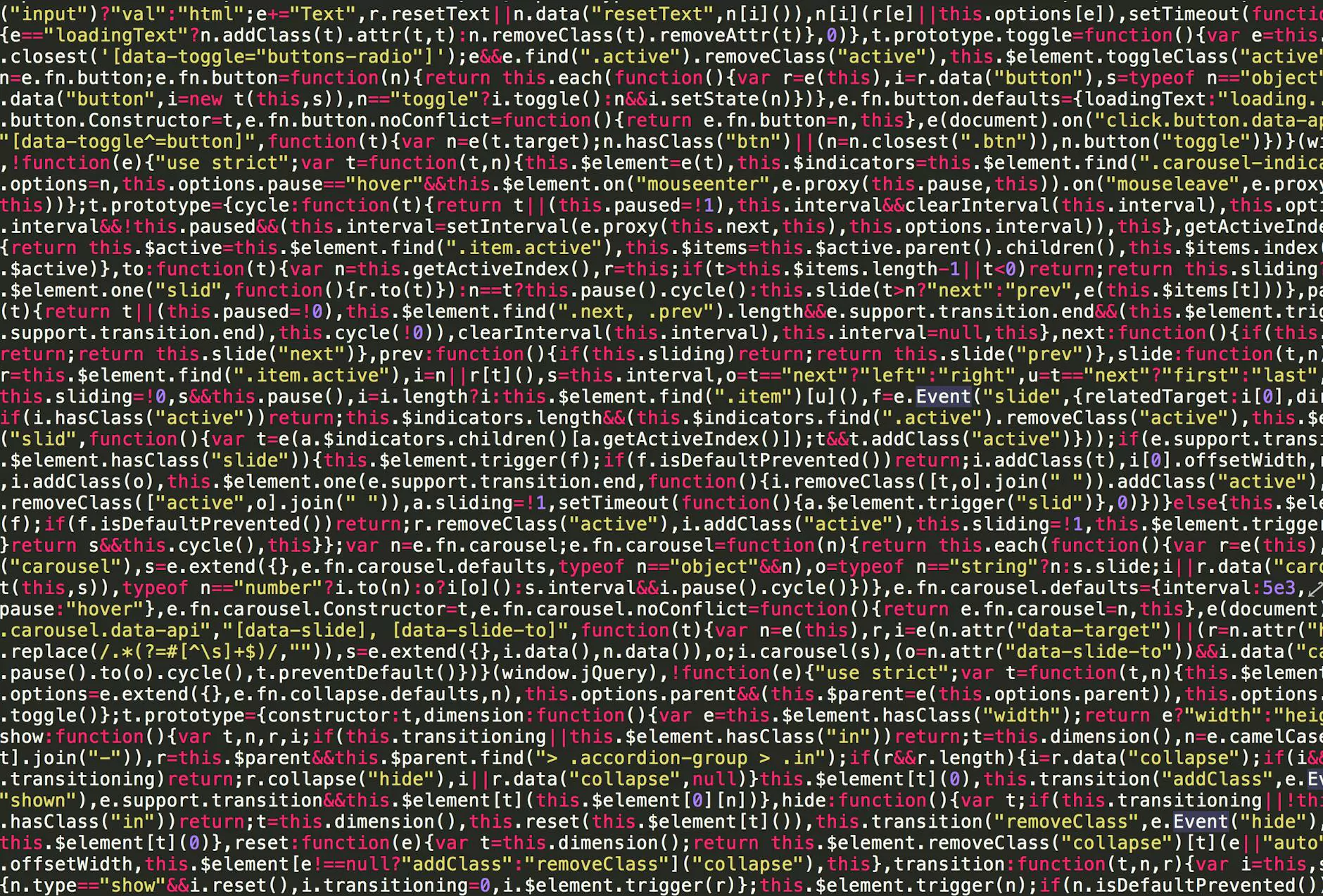7 Software Design Patterns You Must Know in 2022
Blog
Welcome to Seo by Chrys, your ultimate resource for website development in the Business and Consumer Services industry. In this article, we are going to delve into the world of software design patterns, highlighting 7 essential patterns that you must know in 2022.
Software design patterns were introduced as a solution to the common problems faced by developers during the software development process. These patterns provide proven, reusable solutions, enabling developers to write well-structured and maintainable code. By incorporating these patterns into your development workflow, you can enhance the scalability, flexibility, and overall quality of your software.
1. Singleton Pattern
The Singleton pattern is widely used in software development. It ensures that only one instance of a class is created throughout the application's lifecycle. This pattern is particularly useful when you need to limit the number of instances of a class, such as when working with database connections or file access. By implementing the Singleton pattern, you can improve resource management and avoid unnecessary duplication of objects.
2. Factory Method Pattern
The Factory Method pattern provides an interface for creating objects, but allows subclasses to decide which class to instantiate. This pattern is an excellent choice when you want to encapsulate object creation logic and make it more flexible. The Factory Method pattern empowers you to create new objects without tightly coupling your code to specific classes, enhancing code maintainability and reusability.
3. Observer Pattern
The Observer pattern is essential for event-driven systems and applications. It establishes a relationship between an object, known as the subject, and a set of dependent objects, known as observers. Whenever the subject undergoes a change, it notifies all of its observers, allowing them to update their state accordingly. By leveraging the Observer pattern, you can achieve loose coupling between components and better manage complex systems.
4. Decorator Pattern
The Decorator pattern enables you to dynamically add responsibilities to an object, providing a flexible alternative to subclassing. By wrapping an object with one or more decorators, you can enhance its behavior without modifying its core functionality. This pattern promotes code reuse and modularity, allowing you to mix and match decorators as needed. It is particularly useful when you want to extend the functionality of existing objects without impacting other parts of your codebase.
5. Strategy Pattern
The Strategy pattern focuses on encapsulating interchangeable algorithms within a family of classes, making them easily interchangeable at runtime. This pattern allows you to define a set of strategies that can be switched in and out depending on the context. By employing the Strategy pattern, you can achieve better code organization, code reuse, and promote the separation of concerns. It is especially useful when dealing with algorithms that have multiple variations.
6. Builder Pattern
The Builder pattern provides an elegant solution for constructing complex objects step by step. It separates the construction of an object from its representation, allowing the same construction process to create different representations. This pattern improves readability and maintainability, especially when dealing with objects that have multiple optional parameters. By utilizing the Builder pattern, you can simplify the construction process, ensuring that your code remains clean, flexible, and extensible.
7. Prototype Pattern
The Prototype pattern allows you to create new objects by copying or cloning existing objects, avoiding the need for expensive object creation operations. This pattern is useful when you want to create multiple instances of an object while keeping memory overhead and instantiation costs to a minimum. By employing the Prototype pattern, you can achieve efficient object creation and improve performance in scenarios where object initialization is costly.
By understanding and utilizing these 7 software design patterns, you can elevate your website development skills to new heights. Incorporating these patterns into your projects will not only enhance code quality and maintainability but also streamline your development process.
At Seo by Chrys, we take pride in providing valuable resources and insights to empower developers like you. Stay tuned for more informative articles and tutorials geared towards helping you excel in the ever-evolving world of website development.










